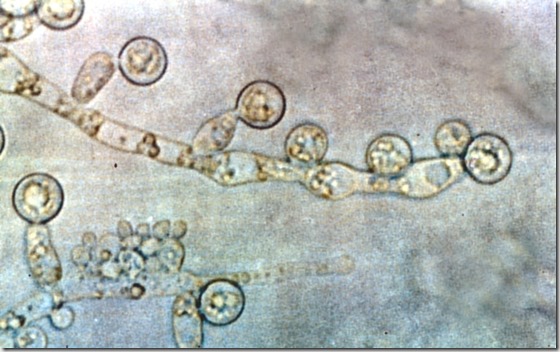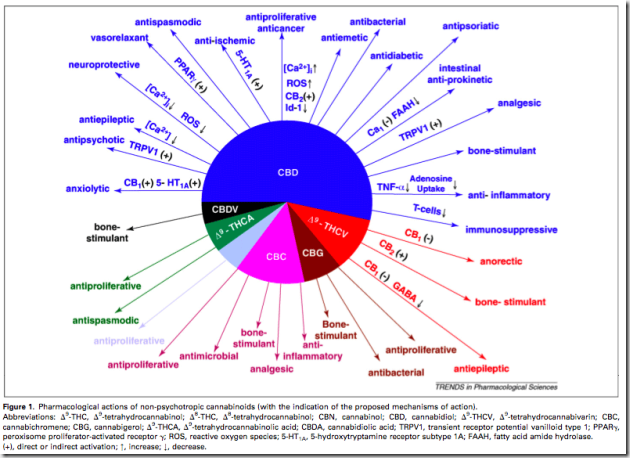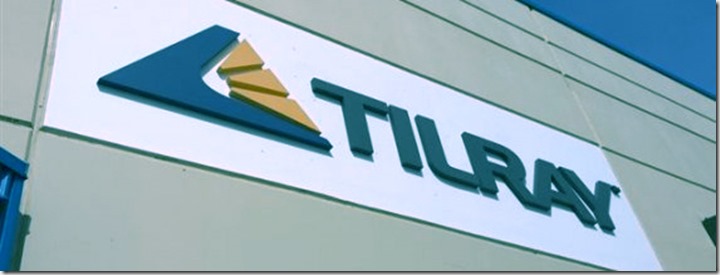By Adrion T. Kelley
My mother, for all intents and purposes, is relatively square. She listens to Rush Limbaugh every morning while working around the house and likes to relax in the evening to a good old-fashioned black and white movie. Needless to say she has never been much of a partier, let alone a drinker or a smoker. However my mother for many years has been a supporter of cannabis being used to help ease the pain and suffering of people diagnosed with cancer. Recently my mother herself was diagnosed with cancer. Along with the diagnosis came an uncomfortable feeling of uncertainty and helplessness that was amplified by the harsh reality of financial burden and medical ambiguity. Through it all my mother and I not only have gained a heightened awareness of the medical communities lack of understanding in regards to cancer itself, but also we have gained the knowledge of a truly effective cure.
Even in a time when medical marijuana is accepted, there is still a misconception about its medical use. Many doctors will admit that some of the compounds found in cannabis are effective in treating the side effects of chemotherapy, but the current medical establishment objects to cannabis and its chemical compounds being used for anything else. This is the same medical establishment who has spent numerous years and countless billions developing a cancer treatment plan that even doctors won’t expose themselves to. Scientists from the McGill Cancer Center asked 79 doctors, all experts on lung cancer, if they themselves were diagnosed with cancer would they consider using chemotherapy. Of the 79 doctors 58 said they would not expose themselves to chemotherapy due to “the ineffectiveness and the elevated level of toxicity of chemotherapy” (Day). So would using cannabis to treat cancer be more effective and less toxic than chemotherapy?
Before exploring the medical benefits associated with cannabis as an alternative cancer therapy, it is necessary to have a clear understanding of what exactly cancer is. According to the National Cancer Institute, cancer is divided into several categories: carcinoma, sarcoma, leukemia, lymphoma, melanoma and central nervous system cancers. In spite of the different names and locations of these cancers in the body, they all share a common process (National Cancer Institute par. 1). Cancer cells start off as normal cells in the body, but somewhere in the cells life cycle of growth and death something happens to these cells that prevents them from dying. Rather than completing the normal cell life cycle, they instead keep growing in a specific location of the body until a cancerous lesion or tumor is created. If small groups of cancer cells break away from the main group of cancer cells they will find away into the blood stream where they travel to other parts of the body and begin to grow in a new location. So what causes these normal cells to mutate and form cancer cells?
A recent study from the Department of Immunology in Mexico stated, “There is increasing evidence of a close link between inflammation and cancer, and at the core of inflammation there are both pathogen-associated molecular patterns (PAMPs) and danger (or damage)-associated molecular patterns (DAMPs)” (Department of Immunology par.1). DAMPs and PAMPs are sensors located within the body’s immune cells that gather and process information when the cells come in contact with pathogens (germs). When the PAMPs and DAMPs identify the molecular pattern of a pathogen, a command is given from the PAMPs and DAMPs to the rest of the cell to devour the pathogen (R&D Systems pg. 1). So if cancer cells are just immune cells responding to a pathogen, then what pathogen are the immune cells responding to? This leads to an even better question, “Is there a wide spread pathogen whose infection has a high probability of creating cancer?”
According to report published by the American Society of Microbiology “Candida albicans is the most common human fungal pathogen” (Noble and Johnson par. 1). Also the Centers for Disease Control and Prevention reports that “Candida is the fourth most common cause of bloodstream infections among U.S. hospital patients” (Center for Disease Control and Prevention par. 1). As to its probability of causing cancer the Department of Biology at Youngstown State University in Ohio found that “inoculation of C. albicans produces numerous tumor-like lesions and abscesses on the major organs of experimental laboratory rats” (Department of Biology par. 1) However it is unethical for a doctor or a scientist to purposefully inject a human subject with Candida albicans, so the likely hood of such important data being collected is impossible. Fortunately there was study done by the Institute of Clinical Medicine in Aarhus, Denmark showing that out of 21,247 patients with Candida albicans 100% of them were diagnosed with some form of cancer within 10 years of contracting Candida albicans (Department of Clinical Epidemiology par. 2). These facts point to Candida albicans as being one cause of cancer, but there are numerous other chemicals and pathogens that are said to be carcinogenic. What is the probability of Candida albicans being the sole cause of cancer? To explore this theory it is imperative to know how the fungus interacts with the human body.

(Wikipedia: Candida albicans)
According to a report by the American Society for Microbiology “All humans are colonized with Candida species, mostly Candida albicans” (Achkar and Fries par. 1). For the most part Candida albicans lies dormant within the human body, however when certain levels of PH in the stomach or blood stream are reached Candida albicans begins to accelerate its growth. The normal PH levels of the human stomach are 1.5-3.5 PH (very acidic) and normal blood stream PH is about 7.4 PH (alkaline). The Tohoku Pharmaceutical University in Sendai, Japan found that the optimal level for Candida albicans growth was between 4-7 PH (Department of Microbiology par. 1). Coincidentally Dr. A.K. Brewer discovered that by temporarily raising the blood PH of 30 human cancer patients with alkaline (base) elements to a level of 8 PH, he was successfully able to completely eliminate the cancer in all 30 patients, some patients tumors were eliminated within 12-36 hours (Brewer par. 1).
Candida albicans is not only a fungus but it is also considered yeast. According to S. Baron, editor of Medical Microbiology “Small molecules (e.g., simple sugars and amino acids) accumulate in a watery film surrounding the hyphae or yeast and simply diffuse through the cell wall” (Baron par. 1). Glucose (sugar) is the main source of food for all cells in the human body, but it is also the main source of food for Candida albicans. By stealing the glucose from the cells of the body the yeast begins to multiply faster, quickly eating away the tissue of vital organs. Like brewers yeast, Candida albicans converts sugar into alcohol, however this alcohol is not ethanol (vodka), but acetaldehyde (the chemical that causes hangovers) (Oral and Maxillofacial Pathology Unit par. 4). Coincidentally, scientists at Keele University in Trent, U.K. made “the discovery that acetaldehyde is released by the lung cancer cell” (Center for Science and Technology in Medicine par. 1). Due to the acidity of acetaldehyde the average PH level in the blood stream drops creating an optimal PH range for Candida albicans to spread through out the body. This theory of cancer being the result of fungus seems like a fairly logical conclusion, but do any reputable medical institutes dedicated to the advancement of cancer research share this same conclusion?
In May of 2013 the U.S. National Cancer Institute tested an antifungal medicine named “Compound 3c” and found that the medicine “showed high activity against HOP-92 (Non-Small Cell Lung Cancer)” (Heterocyclic Compounds Research Group par 1). Apparently these results were so promising that a few months later in October of 2013 scientists form Gaziosmanpaşa University in Tokat, Turkey carried out similar experiments with similar results when testing their antifungal compound on cancer cells. In light of these positive findings, scientists from the Faculty of Marine Sciences in Jeddah, Saudi Arabia began testing an antifungal compound derived from the plant Saraca indica on cancer cells and published their findings in November of 2013. Shortly after that, a group of scientists from the University of Calabria in Rende, Italy extracted antifungal chemicals from Citrus seeds with the intent of using this extraction to treat cancer. Which brings us to the most talked about, most tested, most studied, most published plant derived antifungal and anticancer compounds in modern history, cannabinoids.

According to the National Cancer Institute “Chemical components of Cannabis, called cannabinoids, activate specific receptors found throughout the body to produce pharmacologic effects, particularly in the central nervous system and the immune system” (National Institutes of Health par. 1) There are literally hundreds of reports regarding the anti-tumor properties of cannabinoids published by the National Institutes of Health. One of these reports reveals how scientists had analyzed “the pathways triggered by cannabinoids to induce apoptosis” (Department of Experimental Biomedicine and Clinical Neuroscience par. 1) in cancerous tumors. Apoptosis is a condition were the body literally commands a certain group of cells to die, in this case cannabinoids trigger a mechanism in the human body that sends this command specifically to cancer cells. More fascinating still is the discovery made by scientists from Periyar University in Salem, India regarding the highly effective anti-fungal properties of cannabinoids when applied to samples of cultured Candida albicans.
Currently the cannabis plant, DEA number 7360, is considered a schedule I drug according to the U.S. Department of Justice. This means that there is absolutely no medical value associated with cannabis. However in 2001 the U.S. Department of Health and Human Services filed a U.S. patent on cannabinoids sighting that “cannabinoids are found to have particular application as neuroprotectants, for example in limiting neurological damage following ischemic insults, such as stroke and trauma, or in the treatment of neurodegenerative diseases, such as Alzheimer’s disease, Parkinson’s disease and HIV dementia” (United States par. 1) This is an obvious contradiction in U.S. drug policy.
(Corrie Yelland, Cancer survivor and medical cannabis advocate)
Through the trials and tribulations of cancer, my mother and I have gained these key points of knowledge: 1. Cancer and tumors are not a disease, they are the bodies immune response to a foreign pathogen. 2. Candida albicans is the pathogen that triggers the body’s immune system to produce what doctors habitually misdiagnosed as “cancer”. 3. The cannabis plant contains chemical compounds called cannabinoids that have been proven to be a safe, low cost and effective treatment against life threatening Candida albicans infections. Doctors, pharmaceutical companies, law enforcement officers and politicians all tremble with fear as they begin to realize that the angry mothers of America unite with this new found awareness regarding “cancer”. These angry mothers will impose a social, economical and spiritual retribution in the names of all friends, cousins, sisters, daughters, granddaughters, aunts, mothers and grandmothers who fell victim to the carefully crafted illusion of “cancer”. This retribution, the likes of which no fascist has ever seen, will be wrathfully administered the moment these angry moms realize that more women have died from a lie than a disease.
By Adrion T. Kelley
References
Achkar and Fries, “Candida Infections of the Genitourinary Tract.” Clinical Microbiology Reviews 23.2 (2010). National Center for Biotechnology Information. Web. Mon. 1 Nov. 2013.
http://www.ncbi.nlm.nih.gov/pmc/articles/PMC2863365/
Baron, S. “Basic Biology of Fungi.” Medical Microbiology (1996). National Center for Biotechnology Information. Web. Mon. 1 Nov. 2013.
http://www.ncbi.nlm.nih.gov/pubmed/21413296
Brewer, A.K.. “The high pH therapy for cancer tests on mice and humans.” Pharmacology, Biochemistry and Behavior 21 (1984). National Center for Biotechnology Information. Web. Mon. 1 Nov. 2013.
http://www.ncbi.nlm.nih.gov/pubmed/6522424
Center for Disease Control and Prevention. “Measuring the Incidence of Candida Bloodstream Infections and Tracking Antifungal Drug Resistance.” Center for Disease Control and Prevention (2012). Center for Disease Control and Prevention. Web. 1 Nov. 2013.
http://www.cdc.gov/hai/eip/candida.html
Center for Science and Technology in Medicine. “Quantification of acetaldehyde released by lung cancer cells in vitro using selected ion flow tube mass spectrometry.” Rapid Communications in Mass Spectrometry: RCM 17.8 (2003) National Center for Biotechnology Information. Web. Mon. 1 Nov. 2013.
http://www.ncbi.nlm.nih.gov/pubmed/12672140
Day, Philip. Cancer: Why we’re still dying to know the truth. Credence Publications, 2000. Print.
Department of Biology, “Chemical and physiological effects of Candida albicans toxin on tissues.” Cytobios 94 (1994). National Center for Biotechnology Information. Web. Mon. 1 Nov. 2013.
http://www.ncbi.nlm.nih.gov/pubmed/8020249
Department of Epidemiology, “Candida infection and cancer risk: a Danish nationwide cohort study.” European Journal of Internal Medicine 24.5 (2013). National Center for Biotechnology Information. Web. Mon. 1 Nov. 2013.
http://www.ncbi.nlm.nih.gov/pubmed/23522963
Department of Experimental Biomedicine and Clinical Neuroscience. “Cannabinoid-associated cell death mechanisms in tumor models (review).” International Journal of Oncology 41.2 (2012). National Center for Biotechnology Information. Web. Mon. 1 Nov. 2013.
http://www.ncbi.nlm.nih.gov/pubmed/22614735
Department of Immunology. “The interplay between pathogen-associated and danger-associated molecular patterns: an inflammatory code in cancer?” Immunology and Cell Biology 91 (2013). National Center for Biotechnology Information. Web. Mon. 1 Nov. 2013.
http://www.ncbi.nlm.nih.gov/pubmed/24100386
Department of Microbiology. “Mechanism of Candida albicans transformation in response to changes of pH.” Biological and Pharmaceutical Bulletin 29.5 (2006). National Center for Biotechnology Information. Web. Mon. 1 Nov. 2013.
http://www.ncbi.nlm.nih.gov/pubmed/16651720
Heterocyclic Compounds Research Group. “Synthesis, antifungal and antitumor activity of novel (Z)-5-hetarylmethylidene-1,3-thiazol-4-ones and (z)-5-ethylidene-1,3-thiazol-4-ones.” Molecules 18.5 (2013) National Center for Biotechnology Information. Web. Mon. 1 Nov. 2013.
http://www.ncbi.nlm.nih.gov/pubmed/23669632
National Institutes of Health. National Cancer Institute. NCI, 2013. Web.
http://www.cancer.gov/cancertopics/cancerlibrary/what-is-cancer
http://www.cancer.gov/cancertopics/pdq/cam/cannabis/healthprofessional/
Noble and Johnson. “Strains and Strategies for Large-Scale Gene Deletion Studies of the Diploid Human Fungal Pathogen Candida albicans.” American Society for Microbiology (2004). American Society for Microbiology. Web. Mon. 1. Nov. 2013.
http://ec.asm.org/content/4/2/298.abstract
Oral and Maxillofacial Pathology Unit. “Production of carcinogenic acetaldehyde by Candida albicans from patients with potentially malignant oral mucosal disorders.” Journal of Oral Pathology & Medicine 42.3 (2012). National Center for Biotechnology Information. Web. Mon. Nov. 1 2013. http://www.ncbi.nlm.nih.gov/pubmed/22909057
R&D Systems. “Pattern Recognition Receptors.” R&D Systems. R&D Systems, Inc., 2013. Web. Mon. 1 Nov. 2013.
http://www.rndsystems.com/Resources/Images/26231.pdf
United States. Dept. of Commerce. Patent and Trademark Office. “United States Patent Hampson, et al.” United States Patent and Trademark Office. Dept. of Commerce, Oct. 2003. Web. 1 Nov. 2013.
http://patft.uspto.gov/netacgi/nph-Parser?Sect1=PTO1&Sect2=HITOFF&d=PALL&p=1&u=%2Fnetahtml%2FPTO%2Fsrchnum.htm&r=1&f=G&l=50&s1=6,630,507.PN.&OS=PN/6,630,507&RS=PN/6,630,507






